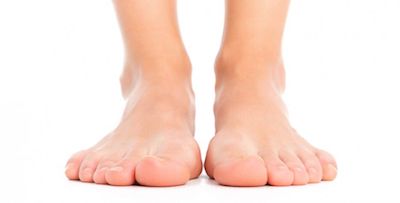 Flat feet – the bane of any aspiring athlete; the nightmare of a hopeful military or police cadet; the condition that orthotic companies market as disasterous to parents walking in the mall with their child.
Flat feet – the bane of any aspiring athlete; the nightmare of a hopeful military or police cadet; the condition that orthotic companies market as disasterous to parents walking in the mall with their child.
However, there are many misconceptions about the condition. So how does one separate the myths from the truths?
TRUTH: It is NORMAL for children to have flat feet
Are you tired of relatives or sales representatives telling you that your child has flat feet and needs to be treated as soon as possible? Well, you are not alone. Have a look at how a baby takes his first step. Do you see him stumbling and looking as if he is about to fall?
To avoid falling, babies adopt a wider stance. Coupled with the fact that most of their weight-bearing joints are still flexible, having flat feet is completely normal for children between the age of 1 to 6. Most children will naturally develop foot arches when their legs become stronger.
TRUTH: It is NORMAL to get flat feet as you age
Like a car, your body is subjected to normal wear and tear over the years. It is no different in the foot where parts of it act like a rubber band that loses its elasticity. Only once this normal degeneration of the body causes incapaticating pain that interferes with daily activities does a trip to a foot specialist or a physical therapist would be warranted for further management. For example, plantar fasciitis is a condition where the thick band of tendon below the foot is inflamed and may need intervention.
TRUTH: Orthotics are NOT miracle cures
Let’s say your child has not developed an arch by the time he is 7 years old, or your feet have become as flat as a pancake over the years and walking has become painful. The internet has directed you to buy expensive arch supports that do not improve your condition. What went wrong?
Understand that certain orthotics actually do not help with correcting flat feet. In fact, it has been documented that putting on a pair orthotics that immobilises your feet for extended periods of time can cause muscle weakness and dependency on the orthotics. It is similar to putting your arm in a sling for months on end and finding the entire arm has shrivelled due to muscle wasting.
What you should be looking for are fully researched and medically approved postural insoles that are catered to your feet and should be worn onlyn for a certain period of time – typically a year – in addition to corrective postural and balancing exercises to strengthen the feet.
TRUTH: True flat feet are rare
Not everyone with flat-looking feet has what we call a rigid flat foot aka “Pes Planus” (true flat feet) where the bones of the feet have fused and the affected feet are flat, whether they are bearing the body’s weight or not.
Here is how you can tell if you are truly flat footed or just having a flexible flat foot. Stand on your bare feet and raise your heels. Look down at your feet and check the arch. A true flat footed person will have a missing arch while a flexible flat foot will form an arch. Neither exercise nor orthotics can fix a rigid flat foot.
Regardless if you are truly flat footed or simply having a flexible arch, you should not worry much unless pain severely limits your day to day activities.
The smallest steps are always the biggest
Training a flexible arch to be strong does not require a fully equipped gym or the services of a physical therapist. By practicing this simple exercise wherever you are, you can gradually strengthen your arch.
Stand on your bare feet. Try pushing down on both your big toes and wiggle your other four toes. Naturally your arch will contract and it will strengthen over time with patience and consistent practice.
It is best to get your feet assessed by a trained medical specialist who has the know how to assess your foot and provide the best solution for you when faced with foot pain. Conditions like these are not life threatening but rather life style threatening which may lead to reduced mobility and severely affect your health in the long run.
Mr. Jonathan Goh is a physiotherapist currently working in Sarawak. He is the head of the physiotherapy unit in a private clinic and is passionate about adjusting lifestyles to avoid conditions like scoliosis and osteoarthritis
References:
- Applied Anatomy and Biomechanics in Sport By Timothy R. Ackland, Bruce Elliott, John Bloomfield
- Efficacy of foot orthoses:what does the literature tell us? Karl B. LandorfDip App Sc (Pod), Grad Dip EdAnne-Maree KeenanB App Sc (Pod), M App Sc
[This article belongs to The Malaysian Medical Gazette. Any republication (online or offline) without written permission from The Malaysian Medical Gazette is prohibited.]
